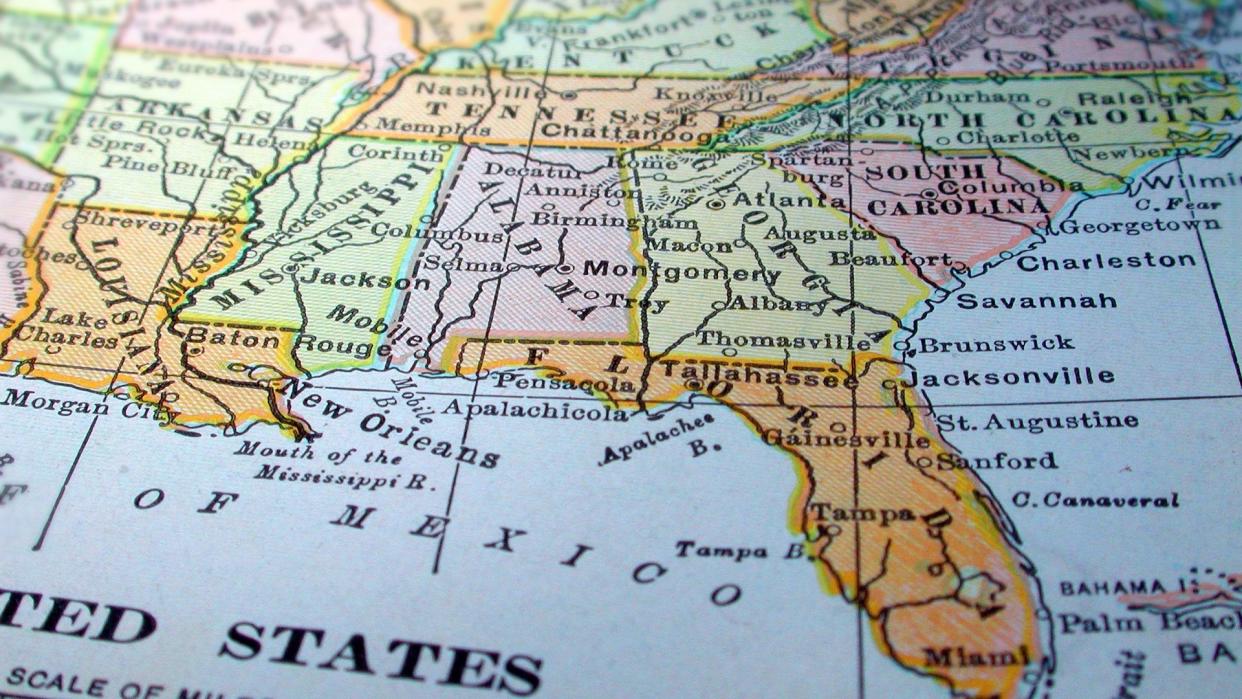What Do the Top 10 States Suffering Most From Inflation Have in Common?

The 41-year high inflation is hitting Americans on every level. Whether it’s gas, food prices or rents, it’s taking a big chunk out of everyone’s paycheck across the nation. Now, a new study has shown that residents of Southern states may feel the hit to their wallets even more intensely than elsewhere.
Social Security Schedule: When July 2022 Benefits Will Be Sent
SNAP Schedule: When Can I Anticipate July 2022 Payments?
Merchant Maverick’s inaugural report, “The 10 U.S. States Where Inflation Is Hitting Consumers The Hardest,” examined where inflation is rising the fastest, and how much existing factors within a state may contribute to the stress on a household budget. One of the key findings is that inflation is causing prices to rise higher and faster in the South than in the rest of the country, which, combined with generally lower median household incomes, is affecting the region the most.
The report noted that one of the reasons is that the South is likely a victim of its own success, with key metropolitan areas such as Atlanta, Austin and Tampa absorbing an influx of new residents, predominantly from the Northeast and West Coast.
Chris Motola, Merchant Maverick special projects data editor, told GOBankingRates that the phenomenon is happening in most of the major metro areas in the South. “Tampa, Dallas and Atlanta stand out, Austin to a slightly lesser degree,” he said. “Miami is having a lot of housing and utility pricing pressure, but isn’t seeing quite as much food or fuel price inflation as some other Southern cities.”
The top state affected by inflation is Louisiana, the report found, as it is burdened by the highest sales tax rate in the nation and one of the lowest median household incomes. Next comes Florida. The high cost of living relative to other states, substantial sales tax and low median income all have the Sunshine State reeling from inflation, the report noted, adding that South Florida has been especially hard-hit by inflation and particularly housing and gas prices, with cities like Tampa and Miami experiencing drastically higher prices this year over last.
Rounding up the top 10 states suffering the most from inflation are Tennessee, Georgia, Arkansas, Texas, Alabama, Oklahoma, Mississippi and South Carolina.
Live Updates: Financial Trends, Money News and More
On the other end of the spectrum, the Northeast is faring better, as the region had generally higher prices prior to the pandemic, but the rate of increase there is lower than the national average. Also, higher median household incomes have made any increases easier to stomach, the report stated.
“It’s a little surprising since the Northeast has traditionally had higher regional price parity,” Motola said. “We may have been heading in that direction over the long term, but the pandemic seems to have accelerated things. Working from home is probably an important distorting factor here because it allows people to take high incomes from places with high RPPs [regional price parity] and buy housing in places with lower RPPs.”
Finally, Midwestern states with strong household income are also faring better. “Given its relatively high regional inflation rate, I didn’t necessarily expect Midwestern states to show up in the least affected states. They beat out some Northeastern states,” Motola said. “Some of the things that make states recession-resistant also pay off when it comes to absorbing the impacts of inflation. Strong median household income, for example.”
The top least affected state is New Hampshire, as it’s benefiting from the complete lack of sales tax and high median household income. Vermont is next, as it enjoys a relatively high household income and low sales taxes. Rounding out the top least inflation-affected states are Connecticut, Massachusetts, Maine, Pennsylvania, New Jersey, Iowa, Wisconsin and Nebraska.
Rate of Inflation 2022: Could It Hit 9%? This Expert Thinks So
Explore: Experts Agree Social Security COLA Likely to Hit 8% in 2023 Thanks to Inflation
Asked whether these trends will continue, Motola said that he actually thinks they will slow down. “Tightening monetary policy is probably going to slow down the Southern housing boom and the value proposition of relocating, and with residents of Northeastern states seeming to have lost their appetite for COVID restrictions, some people who left temporarily may return,” he said.
More From GOBankingRates
This article originally appeared on GOBankingRates.com: What Do the Top 10 States Suffering Most From Inflation Have in Common?
